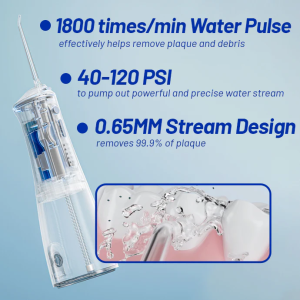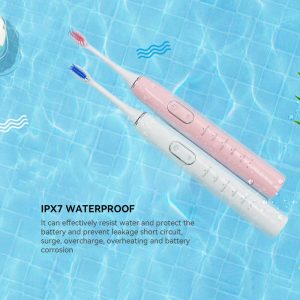In industrial processes and high-performance equipment, consistent operation is paramount. However, issues like Pressure Fluctuations and Flow Irregularities can severely disrupt system efficiency and product quality. In this article, we explore the key causes behind these problems, their effects on process stability, and provide actionable strategies to fix them — ensuring that your systems run smoothly and reliably.
Understanding the Impact on Operational Efficiency
Reliable process control is crucial in any manufacturing system. Pressure Fluctuations can lead to unpredictable force application in hydraulic or pneumatic systems, while Flow Irregularities disrupt steady fluid movement, affecting process accuracy and product uniformity. These issues may lead to increased wear on components, unexpected downtime, and an overall decline in system performance. Recognizing how these problems impact operations is the first step toward implementing effective corrective measures.
Identifying the Root Causes
Addressing these issues begins with an in-depth analysis of their causes. Common factors contributing to Pressure Fluctuations include:
- Inconsistent Supply Pressure: Variability in supply line pressure can directly affect performance.
- Valve Malfunctions: Worn or improperly calibrated valves may cause erratic pressure changes.
- Ambient Environmental Factors: Temperature changes and vibrations can further destabilize pressure levels.
Similarly, Flow Irregularities often stem from:
- Blockages in the System: Debris or scale buildup in pipes and hoses can restrict fluid movement.
- Design Inefficiencies: Suboptimal channel design or routing may cause turbulence.
- Equipment Wear: Aging components and degraded seals can lead to leaks and inconsistent flow.
Pinpointing these underlying causes is essential for devising tailored solutions.
Diagnostic Techniques for Monitoring System Performance
Before implementing a fix, accurate diagnosis is key. Utilize advanced monitoring techniques such as:
- Real-Time Pressure Sensors: These devices continuously monitor pressure and alert operators to fluctuations.
- Flow Meters and Analyzers: Installing flow meters helps track irregularities in fluid movement throughout the system.
- Data Logging and Trend Analysis: Collecting and analyzing data over time enables the identification of patterns and anomalies, allowing for proactive maintenance.
- Ultrasonic or Thermal Imaging: These non-invasive methods can detect blockages or leaks in critical areas without shutting down operations.
By employing these diagnostic tools, manufacturers can precisely locate and address points of failure.
Engineering Solutions to Stabilize Pressure and Flow
Effective resolution of Pressure Fluctuations and Flow Irregularities often requires both design adjustments and process improvements:
- Upgrade to High-Quality Components: Invest in robust pressure regulators and precision-engineered valves that maintain consistent outputs.
- Optimize System Design: Streamline piping and channel configurations to ensure smooth, laminar flow and reduce turbulence.
- Implement Redundant Systems: In critical applications, consider parallel piping or backup control systems to maintain pressure and flow stability in case of component failure.
- Enhance Control Algorithms: Modern control systems with real-time adjustments can correct deviations before they become significant issues.
These solutions not only mitigate current problems but also create a more resilient system for the future.
Maintenance Practices to Prevent Recurrence
In addition to engineering improvements, routine maintenance is essential to prevent recurring issues. Recommended practices include:
- Scheduled Cleaning: Regularly clean pipes, valves, and filters to remove debris and scale buildup that could cause blockages.
- Periodic Calibration: Ensure sensors, valves, and regulators are periodically calibrated to maintain accuracy.
- Component Replacement: Replace aging or worn-out components according to a proactive maintenance schedule to avoid failures.
- Environmental Controls: Implement measures to control temperature and humidity in operational areas, minimizing external impacts on pressure stability.
- Operator Training: Regular training for technicians on the latest maintenance protocols ensures early identification and resolution of emerging issues.
Consistent and thorough maintenance can significantly reduce the incidence of pressure and flow problems.
Future Directions and Continuous Improvement
The challenges of Pressure Fluctuations and Flow Irregularities are common but manageable with a forward-thinking approach. Looking ahead:
- Smart Manufacturing Integration: Leverage IoT and artificial intelligence to continuously monitor system performance and predict maintenance needs.
- Innovative Materials: Research and adopt new materials with greater resistance to wear and environmental influences.
- Feedback-Driven Development: Utilize customer feedback and system performance data to drive ongoing improvements in design and operation.
- Collaborative R&D: Work closely with cross-functional teams and industry partners to pioneer next-generation solutions that further stabilize pressure and flow.
These strategies not only address present challenges but also help secure a competitive edge in an increasingly demanding market.
Conclusion
Ensuring stable operation in industrial systems requires vigilant monitoring and proactive maintenance, particularly when dealing with Pressure Fluctuations and Flow Irregularities. By understanding the root causes, employing robust diagnostic and engineering practices, and committing to ongoing maintenance and innovation, manufacturers can significantly enhance system reliability and efficiency. If you’re interested in exploring customized solutions or learning more about optimizing your system’s performance, please contact us today to find out how we can help secure your operational success.



